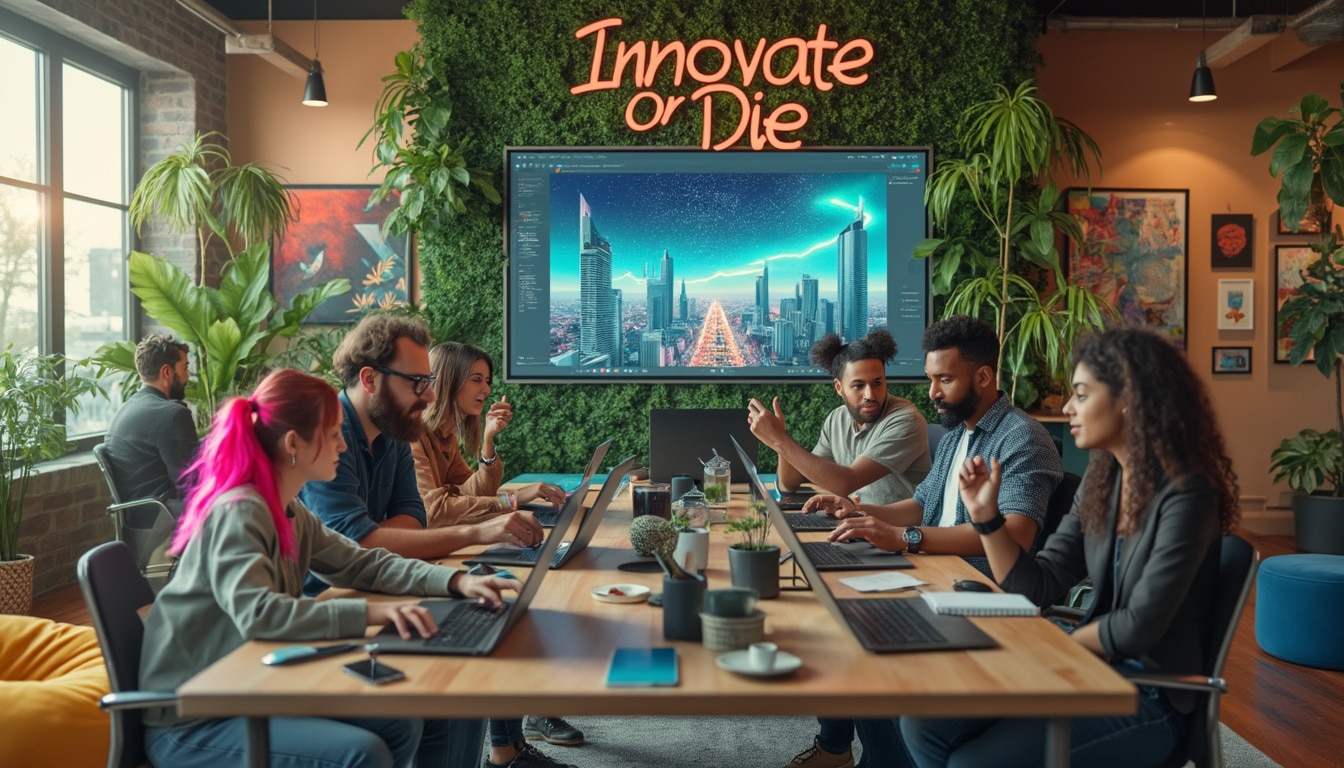The cosmetic industry enters a new era thanks to artificial intelligence. Estée Lauder, a pioneer in the field, partners with Microsoft to revolutionize luxury marketing. This visionary partnership aims to create an innovation laboratory dedicated to generative AI.
This laboratory will enable the development of innovative solutions for better interaction with customers and increased product personalization. Thanks to conversational AI, Estée Lauder optimizes the effectiveness of its advertising campaigns globally. The use of advanced technologies promises to accelerate product delivery while ensuring locally adapted relevance. Together, Estée Lauder and Microsoft are redefining the standards of prestige beauty.
Table of Contents
ToggleEstée Lauder intensifies its use of artificial intelligence
In a world where technology is evolving at a breakneck speed, Estée Lauder continually pushes the boundaries by integrating generative artificial intelligence into its processes. This approach is part of a comprehensive strategy to enhance the online presence of the brand and provide personalized experiences to its customers. The recent integration of Adobe into this equation marks a crucial step in this digital transformation.
How does Estée Lauder use generative artificial intelligence?
Estée Lauder has leveraged advancements in generative artificial intelligence to optimize its marketing campaigns and improve operational efficiency. By collaborating with technology leaders such as IBM and Google, the company has implemented advanced solutions to analyze customer data and anticipate market trends.
The use of generative AI allows Estée Lauder to create personalized advertising content tailored to the individual preferences of each consumer. This increased personalization enhances customer engagement and improves conversion rates for marketing campaigns.
What role does Adobe play in Estée Lauder’s artificial intelligence initiative?
The integration of Adobe into Estée Lauder’s AI strategy is a significant advancement. Adobe, known for its creative and analytical solutions, adds value by enabling better content management and in-depth analysis of customer behaviors. With the tools of Adobe Sensei, Estée Lauder can automate the creation of visual content and optimize marketing campaigns in real-time.
This collaboration with Adobe is part of a continuous innovation effort, where artificial intelligence is at the heart of product development and communication strategies. To learn more about Adobe’s impact in this area, check out this article on How Google revolutionizes its services and products with artificial intelligence.
What are the benefits for Estée Lauder customers thanks to AI?
The integration of generative artificial intelligence offers numerous benefits to Estée Lauder customers. Firstly, it allows for increased product personalization and recommendations, better meeting the individual needs of consumers. For example, thanks to AI, Estée Lauder can suggest makeup shades perfectly suited to each skin tone, thereby enhancing the user experience.
Moreover, the use of intelligent chatbots, developed in partnership with giants like Microsoft, allows for customer support available 24/7, providing quick and relevant responses to customer inquiries. This reinforces customer satisfaction and loyalty, essential elements for the brand’s ongoing growth.
How does AI transform Estée Lauder’s marketing campaigns?
Estée Lauder’s marketing campaigns greatly benefit from the integration of generative artificial intelligence. AI allows for the creation of more relevant and engaging advertising content based on the analysis of massive data (big data) collected from consumers. This technology also enables real-time testing and optimization of different versions of advertisements to maximize their effectiveness.
Furthermore, AI helps identify emerging trends and anticipate the future needs of consumers, allowing Estée Lauder to remain at the forefront of innovation in the cosmetic industry. To discover how other companies are revolutionizing their marketing with AI, check out Making Science and its new division dedicated to artificial intelligence.
What are the implications of this partnership for the cosmetic industry?
The partnership between Estée Lauder and Adobe marks a major transformation in the cosmetic industry. By adopting advanced technologies in generative artificial intelligence, Estée Lauder positions itself as an innovative leader, pushing other brands to follow suit to remain competitive.
This initiative also encourages greater collaboration between the technology and cosmetic sectors, paving the way for new innovations and more sustainable and personalized practices. Moreover, it highlights the growing importance of AI in the overall strategies of companies, not only for marketing but also for product development and customer relationship management.
What challenges does Estée Lauder face in integrating AI?
The integration of generative artificial intelligence is not without challenges for Estée Lauder. One of the main obstacles is the management and protection of customer data. Ensuring the confidentiality and security of sensitive information is crucial to maintaining consumer trust.
Additionally, it is essential to train internal teams to effectively use new technologies to maximize their benefits. The transition to automated processes requires organizational adaptation and significant investment in human and financial resources.
Finally, it is also necessary to navigate the rapid evolution of AI technologies to remain relevant and competitive. Estée Lauder must continuously evaluate and adjust its technological strategies to fully leverage innovations while minimizing potential risks.
What does the future hold for AI in Estée Lauder’s strategies?
The future of artificial intelligence at Estée Lauder looks promising. The brand plans to extend the use of generative AI to other areas, such as product design, inventory management, and forecasting consumer trends. This approach aims to improve operational efficiency and offer an even more personalized and responsive customer experience.
Moreover, Estée Lauder is exploring additional collaborations with technology leaders to integrate even more advanced AI solutions. These partnerships will allow for the development of more sophisticated tools to analyze customer behaviors and anticipate their future needs.
To keep up with the latest innovations in the field of AI and their impact on various sectors, you can check out this article on Meta’s ambitious investment strategy in artificial intelligence.
What lessons can be drawn from Estée Lauder’s initiative?
Estée Lauder’s initiative to integrate generative artificial intelligence with Adobe offers several valuable lessons for companies looking to adopt similar technologies. Firstly, it is crucial to choose reliable and innovative technology partners to ensure the success of AI projects. Collaborating with leaders like Adobe allows benefiting from their expertise and advanced solutions.
Next, the personalization of customer experiences is a key differentiating factor in a competitive market. AI enables going beyond traditional approaches by providing recommendations and content tailored to individual preferences, thereby enhancing customer engagement and loyalty.
Finally, continuous innovation and adaptability are essential for fully capitalizing on the opportunities presented by artificial intelligence. Companies must be ready to invest in training their teams and adjust their strategies according to technological developments to stay at the forefront of innovation.
#>











